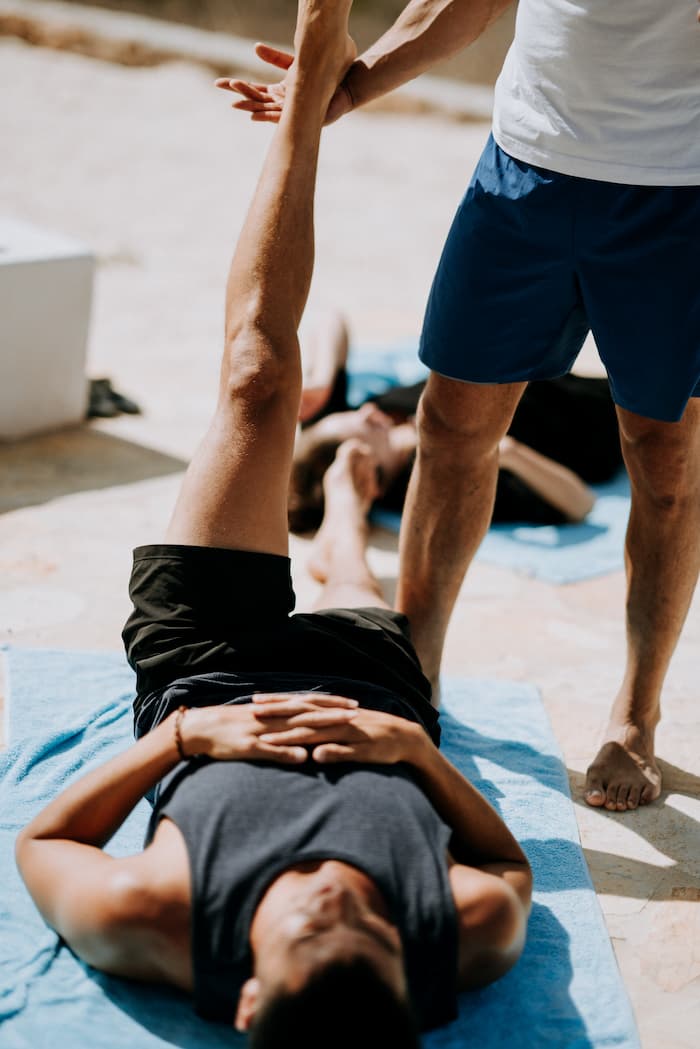
Categories
How to Prevent Common Gym Injuries
Injury prevention and exercise efficiency are closely linked. This is because, in an optimal world, when load is placed on the body, the load is distributed evenly through all necessary areas. Each area is flexible enough to adapt to the force applied and is sufficiently controlled by muscles to be able to cope with the applied load. The term ‘muscular imbalances’ therefore refers to times when the either one area starts to become stiffer than it should be and so cannot conform to load or muscles no longer control areas sufficiently enough and becomes too ‘bendy’.
In fact, about 65 percent of injuries both athletic and lifestyle related come from overuse, which means from repetitive use of joints that are rendered dysfunctional by muscular imbalances.
The following are the most common gym injuries we see in the clinic and can be prevented by understanding what muscles are working to cope and control the exercise.
Common Gym Injuries
1. Rotator cuff impingement from bench pressing
One of the most common injuries during bench press is a rotator cuff impingement. This is caused by the head of the humerus (arm bone) crunching against the acromion (top of the shoulder blade). To stop this occurring we need to strengthen the rotator cuff at shoulder height (the muscles that stabilise the humerus). Grab a light dumbbell and sit on a bench with one leg up in front of you.
Place your elbow on top of the knee. Maintain a ninety degree bend in the elbow as you lower the arm slowly to the horizontal and rise back to the starting position. Make sure your shoulder blade stays depressed and traps relaxed!
2. Lower back pain from deadlifts
This usually occurs due to an overload of the lumbar spine when doing things such as squats and deadlifts. If someone goes into hyperextension of that region, it can put huge pressure on it. We need to try and ensure the pelvic alignment doesn’t stray too far from neutral and build up your core and glute strength so that your lower back can be supported.
3. Plantar Fasciitis from running
Plantar fascia pain is the bane of many a runner. It occurs due to the thick ligament that is the plantar fascia pulling excessively on the heel bone. Our soleus muscle helps support the plantar fascia and strengthening it can prevent this nasty injury. Stand on one leg on the edge of a step and bend the knee to thirty degrees. Maintain this thirty degree bend of the knee whilst dropping the heel over the edge of the step. Go as low as you can and then rise up on to tip toes, again whilst maintaining the bent knee. Repeat this and feel the burn!
4. Hip Impingement from squatting
Just like the shoulder the ball of your hip joint can start to grind against the front of the socket. This usually happens when we squat and sit too much. To alleviate this our best bet is to stretch the hip flexors. Stand with your foot resting on a bench behind you. Squeeze your glutes and tuck pelvis under and then bend your standing knee. Draw the foot to the bottom and continue to bend the standing knee until a strong stretch is felt in the thigh and front of hip. Hold this for 20 seconds and repeat.
By Alex Hunter.
Six Physio is a leading provider of physiotherapy services and uses a unique, collaborative approach to physiotherapy. Manual physiotherapists work in partnership with a rehab specialist so that the problem is not treated, but cured. Six Physio is based in London and South East England and has a wide variety of specialist services, including sports physiotherapy, back pain, women’s health, men’s health and cycling and running assessments. For more information, please visit sixphysio.com
If you have any questions on the above or would like some advice on how we could help you with your fitness goal, don’t hesitate, visit our gym and try one of our small group personal training sessions.
Related Articles
- Training Through Injury
- 7 Simple Ways to Stay Injury Free
- Six Most Common Causes Of Gym Injuries
- Modifications for Training Around Knee Pain
- Why Wont My Nagging Back Injury Clear Up?


